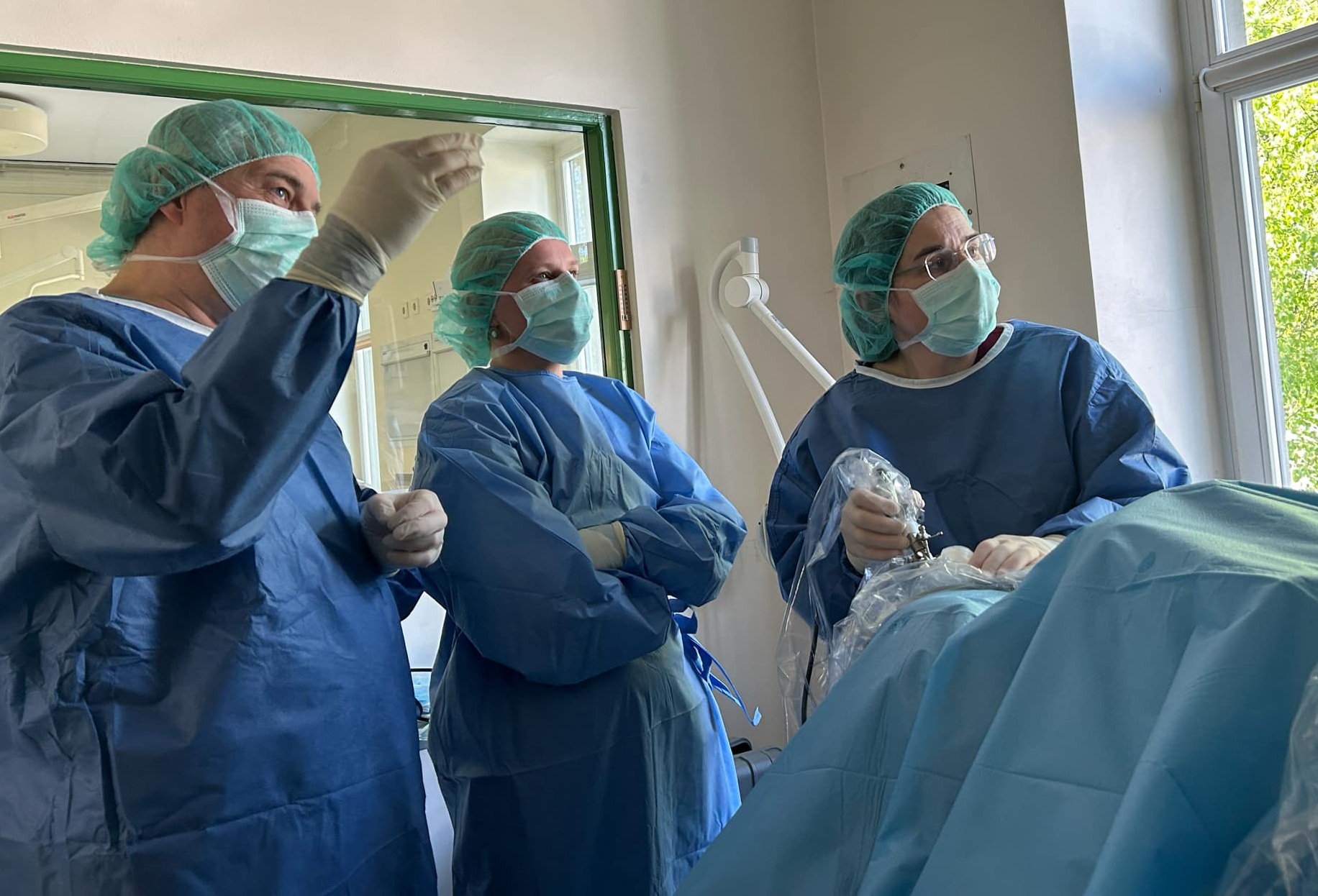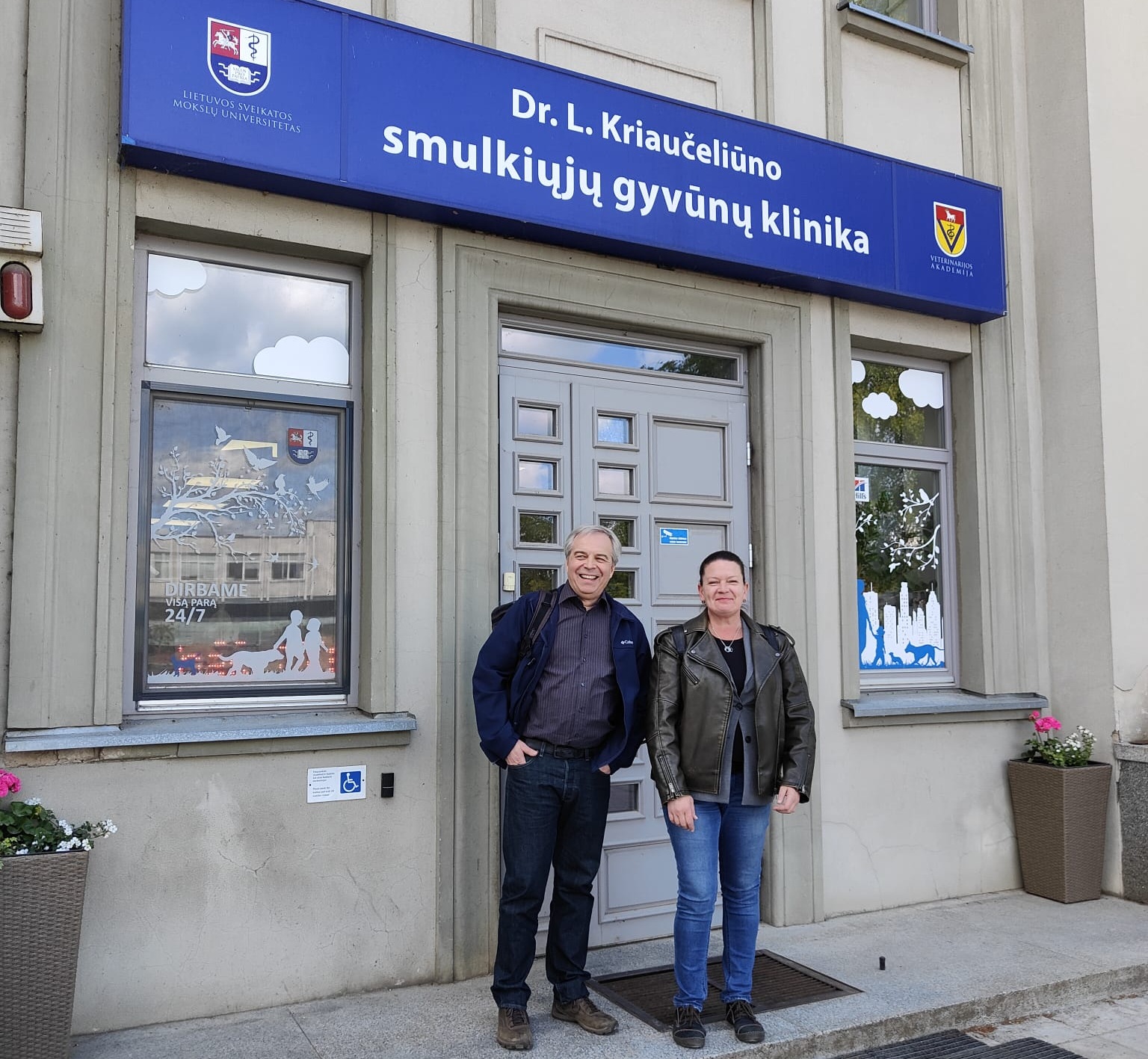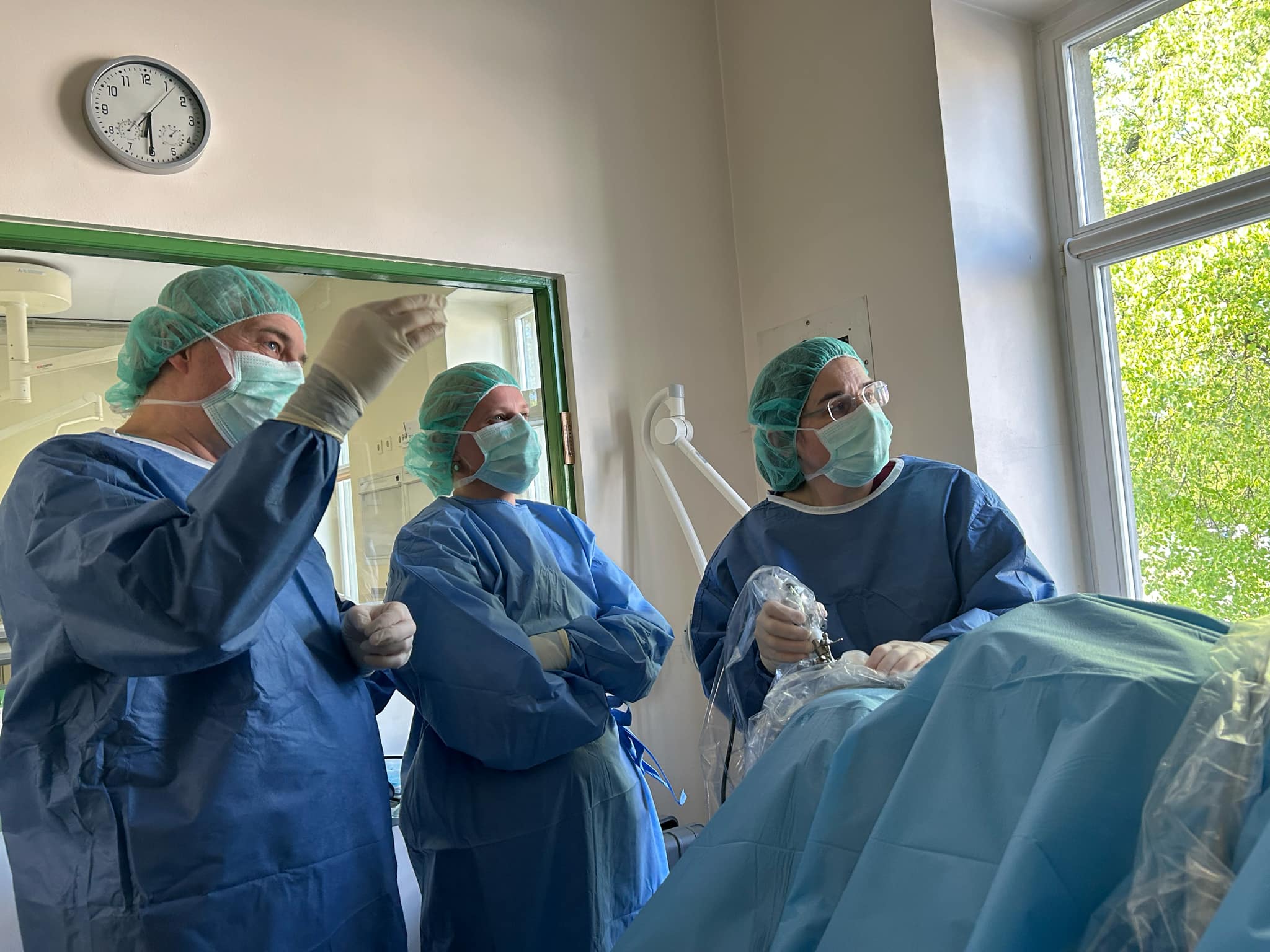In Lithuania, animal haemodialysis is already a reality

For many years, haemodialysis has been used to treat people whose kidneys ceased functioning, often saving their lives. Few people are aware, though, that animals can benefit from this cutting-edge medical technique. For several years now, this procedure has been performed by Dr. Kriaučeliūnas Small Animal Clinic of the Lithuanian University of Health Sciences (LSMU) for dogs and cats.
Renowned animal nephrologists Thierry Francey and Ariane Schweighauser from the University of Bern in Switzerland, who were the forerunners of haemodialysis in European veterinary medicine, recently paid a visit to the LSMU as well. The advancement of veterinary nephrology in Lithuania is marked by this visit. Its significance is demonstrated by both practical advancement and priceless information exchange experiences.
“The university clinic is evolving into a setting where the newest technologies and techniques are used in practice, and patients are treated by highly qualified professionals who are dedicated to ongoing improvement, even though this area of veterinary medicine treatment is still thought to be innovative and complex,” said the host Head of L. Kriaučeliūnas Small Animal Clinic Dr. Lect. Ligita Zorgevica-Pockeviča.
Lithuania has already adopted the life-saving technique
“Haemodialysis is the so-called blood cleaning. When the kidneys of the animal can no longer remove toxins from the body, this work is taken over by the device. During the procedure, the blood is directed through a special tube to a filter that removes harmful substances, and the cleaned blood is returned to the body,” explains Prof. Ariane Schweighauser.

The most frequent reason for this procedure is acute renal failure brought on by poisoning, infections, or other unexpected circumstances. When an animal is poisoned by pharmaceuticals, chocolate, grapes, or other toxic substances, haemodialysis is also performed. Although it is not a daily treatment, the animal may be saved in certain situations.
“We help to win time – we maintain vital functions until the kidneys recover. It is not an easy or cheap procedure, but it is really effective – and more and more pet owners are looking for exactly such help,” explains Prof. Thierry Francey.
He was the first to introduce this treatment from the United States to Europe twenty years ago. The professor claims that the initial experiments were more empirical in nature and attempted to apply knowledge of human medicine to animal care. However, veterinary nephrology has emerged as a distinct scientific discipline in recent years. Treatment methods are tailored to the unique physiology of animals.
“We can do more and more in veterinary medicine today; in some ways, we’ve already caught up to human medicine. We collaborate with coworkers from human health facilities, exchange experiences, and gain knowledge from one another. This communication between various veterinary clinics and between human and animal medicine is crucial,” said Prof. T. Francey.
Today thanks to the training of Prof. Thierry Francey and Prof. Ariane Schweighauser, haemodialysis is performed in Europe by more than twenty institutions, including LSMU Dr. L. Kriaučeliūnas Small Animal Clinic.
“Purchasing a haemodialysis device is frequently seen as the most crucial step. Actually, having skilled individuals who understand how to use it and can make wise decisions is the most crucial factor,” stressed Prof. T. Francey and added that it is wonderful to see how the Dr. L. Kriaučeliūnas Small Animal Clinic veterinary doctors Jūratė Juodytė and Inga Stadalienė continue to seek new knowledge and skills in the field of nephrology.
According to him, only about one in five patients is suitable for haemodialysis, so it is very important to be able to distinguish between what this procedure is really needed and who would be more suitable for surgery or other treatment. It’s also crucial to remember that a sophisticated strategy is required to get the desired results; the dialysis machine or process alone is insufficient.
“For haemodialysis to succeed, it is necessary to have all the necessary foundations: from proper diagnosis to nutritional adjustment, medication and care. Sometimes you just need to put all the pieces of the puzzle together to suit a particular type of patient,” he explains.
Collaboration with LSMU: instruction, expertise, and experience
For a year now, close cooperation has been taking place between the University of Bern and the LSMU Dr. L. Kriaučeliūnas Small Animal Clinic. In addition to discussing dialysis procedures in Lithuania, this tour included a rigorous training week for the clinic’s employees, students, residents, and veterinarians.
The most common causes of incontinence and available treatments, haemodialysis indications, complications and how to manage them, visits and case studies of patients with internal diseases, blood gas analysis, the standards for patient selection and stabilisation against SUB-surgery, and cases of acute and chronic renal failure were all covered in the training.
The subcutaneous urinary tract bypass (SUB) system for cats and small dogs is a special surgically implanted device that allows one to bypass the clogged or damaged ureter, thus restoring the outflow of urine from the kidney to the bladder.
These surgeries are not yet performed in the Baltic States, but veterinary surgeon Ligita Zorgevica-Pockeviča had a great opportunity to perform these complex procedures together with Prof. Francis and Ariane Schweighauser at the University of Bern Small Animal Hospital. Jūrate Juodytė, a veterinary doctor, also participated in the SUB surgery during her stay at the University of Bern.
The primary objective of the Swiss experts’ visit to Lithuania is to exchange information and share insight with their peers.
“Our goal is to pass on the knowledge we have acquired over the past two decades in the fields of nephrology and neuroscience to help colleagues develop the field of haemodialysis in Lithuania and to tell the younger generation about it,” says Prof. A. Schweighauser and adds that learning is mutual.
“We also draw a lot of experience, ideas, thoughts and knowledge from our colleagues. It’s a mutual exchange,” said the professor. The enthusiastic participation of aspiring veterinarians, who voluntarily attended lectures, asked questions, and engaged in discussions, particularly impressed her.
The professors visiting Dr. L. Kriaučeliūnas Small Animal Clinic also were surprised by the high professional attitude toward the patient.
“In some clinics, we are focusing on technology, but here we have seen a real orientation toward the patient – separate waiting rooms for cats and dogs, calmer zones, empathy. This is very important for staff as it helps to reduce the stress and exhaustion that often occurs in our work,” said Prof. T. Francey.







